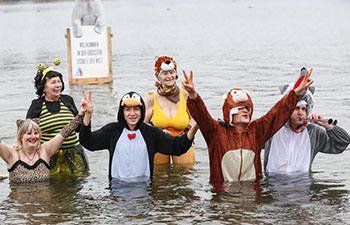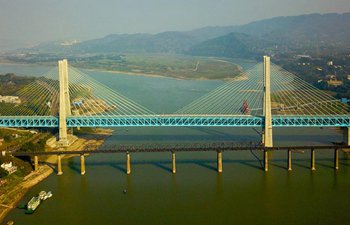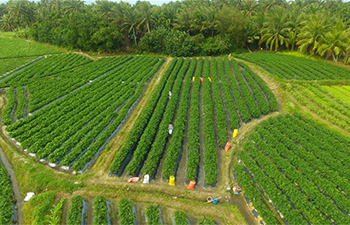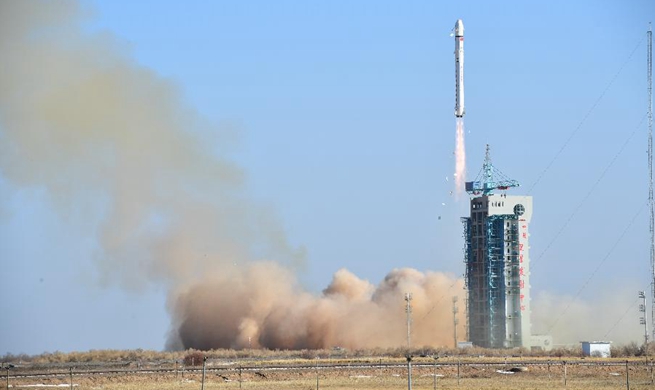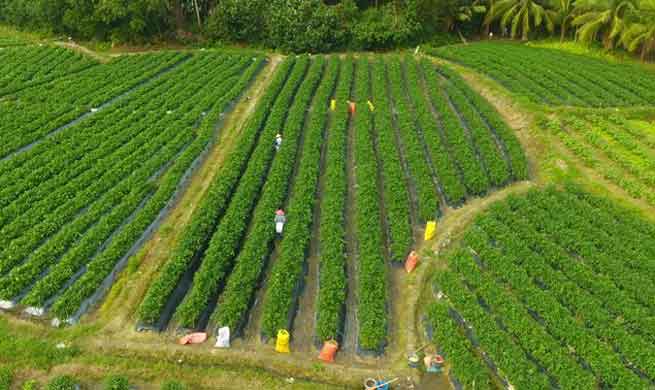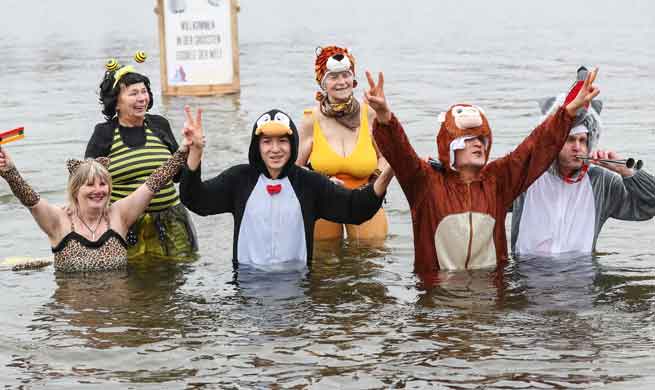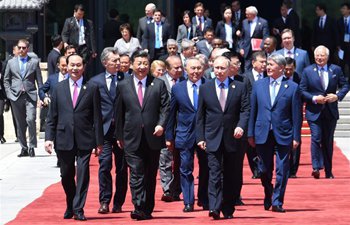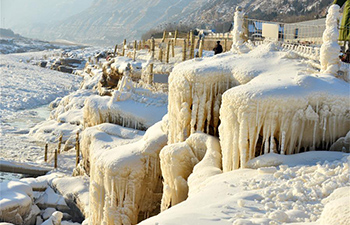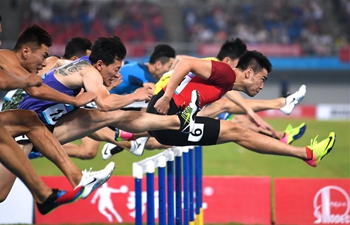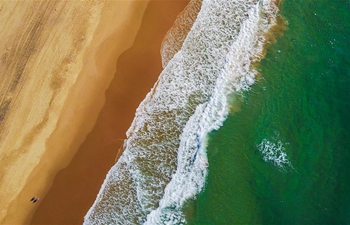WASHINGTON, Jan. 13 (Xinhua) -- SpaceX's Dragon cargo spacecraft splashed down in the Pacific Ocean on Saturday after nearly four weeks in space.
Dragon splashed down successfully about 10:37 a.m. EST (1537 GMT) west of Baja California, completing the second resupply mission to and from the International Space Station (ISS) with a commercial spacecraft, SpaceX said via Twitter.
It carried approximately 4,100 pounds of NASA cargo, science and technology demonstration samples from the ISS.
The spacecraft departed from the ISS at 4:58 a.m., after they used the robotic Canadarm2 to detach Dragon from the Harmony module of the orbiting lab.
After Dragon was released from ISS and its thrusters transported it a safe distance away from the station, SpaceX's flight controllers in Hawthorne, California, executed a deorbit burn command, blasting Dragon back into Earth's atmosphere.
The Dragon spacecraft will be taken by ship to Long Beach, California, where some cargo will be removed immediately for return to NASA, and then it will be prepared for a return trip to SpaceX's test facility in McGregor, Texas, for final processing, according to NASA.
NASA said a variety of technological and biological studies had returned with Dragon.
Hardware from the Made in Space Fiber Optics payload, which demonstrated manufacturing fiber optic filaments in a micro-gravity environment.
The investigation pulled fiber optic wire from a heavy metal fluoride glass commonly used to make fiber optic glass.
Research indicates that the fiber pulled in micro-gravity may not crystallize as much, giving it better optical qualities than the silica used in most fiber optic wire. Results from this investigation could lead to the production of higher-quality fiber optic products both in space and on Earth.
Some payload samples were used to study a stress reaction in plants when experiencing reduced oxygen or hypoxia, which occurs for example, during times of soil flooding.
Such natural low oxygen events are sensed by plants and can lead to either changes in growth and development to aid in the plant' s survival, or in extreme cases, lead to significant losses in productivity and even death.
These spaceflight experiments may help provide molecular targets for manipulation to help make plants more tolerant of low oxygen conditions and so contribute to agriculturally important traits such as crop flood tolerance.
Mice from a NASA study are expected to return live to Earth for additional study. The investigation evaluated a new drug delivery device for administering continuous low doses, which could help counteract muscle wasting and prevent the need for daily or frequent drug administration.
A tiny capsule, implanted under the mouse's skin, delivers a constant, low dose of a drug via a silicone membrane, with channels as narrow as 1/50,000 the width of a human hair.
The drug, called formoterol, is a common therapy in asthma inhalers and for other lung diseases that relaxes muscles responsible for tightening a patient's airways. The low-dose delivery also could help avoid the known side effects of taking high doses long-term.
Dragon is the only space station resupply spacecraft currently able to return cargo to Earth.
The spacecraft lifted off from Space Launch Complex 40 at Cape Canaveral Air Force Station in the U.S. state of Florida on Dec. 15 carrying about 4,800 pounds of supplies and scientific cargo on the company's 13th commercial resupply mission to the station. It arrived at the station Dec. 17.




